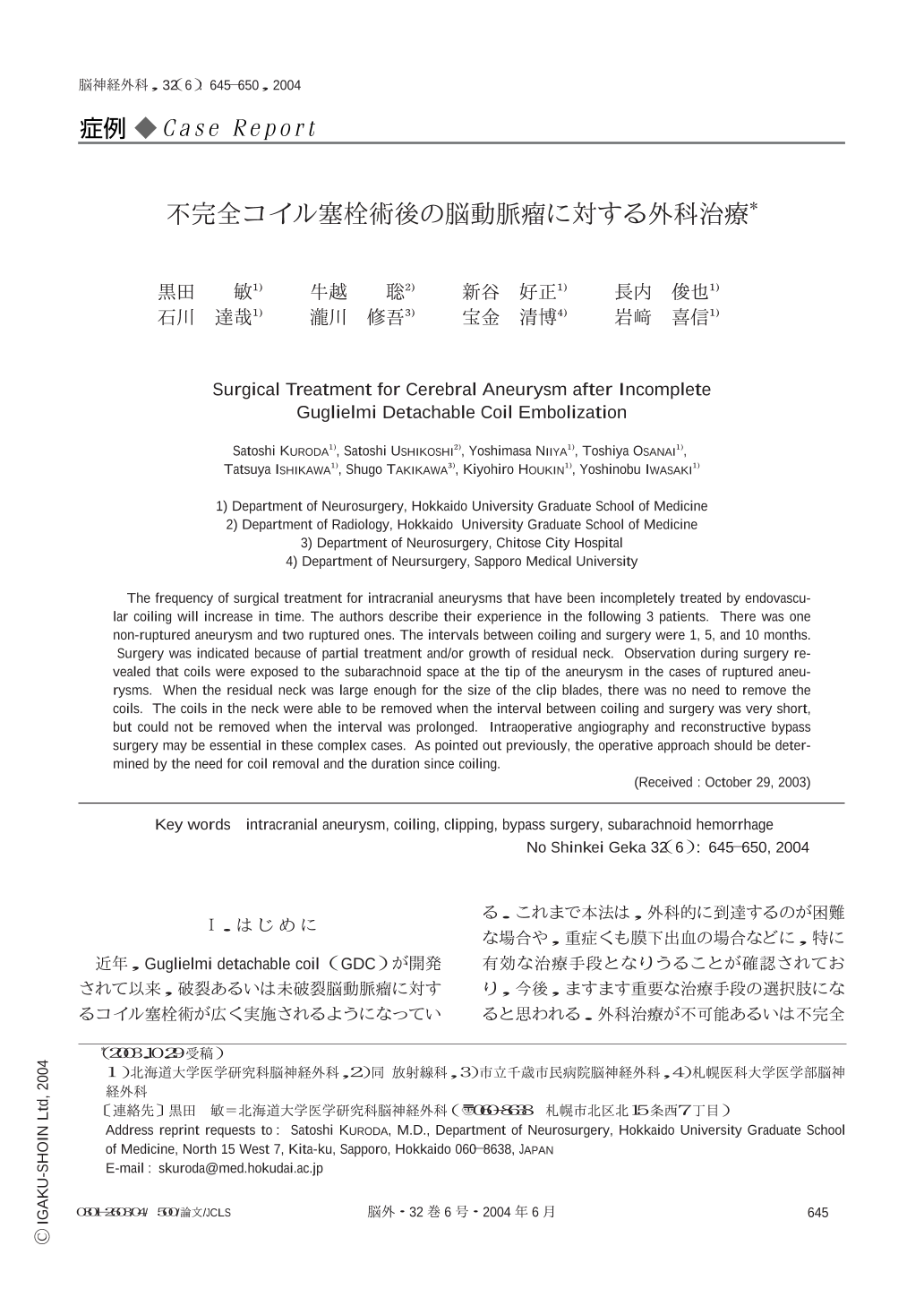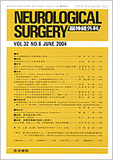Japanese
English
- 有料閲覧
- Abstract 文献概要
- 1ページ目 Look Inside
Ⅰ.はじめに
近年,Guglielmi detachable coil (GDC)が開発されて以来,破裂あるいは未破裂脳動脈瘤に対するコイル塞栓術が広く実施されるようになっている.これまで本法は,外科的に到達するのが困難な場合や,重症くも膜下出血の場合などに,特に有効な治療手段となりうることが確認されており,今後,ますます重要な治療手段の選択肢になると思われる.外科治療が不可能あるいは不完全だった場合に,コイル塞栓術を追加することで根治可能であった症例も報告されている9).しかし,これとは逆に,コイル塞栓術が不完全で頸部の残存を認めたため,なんらかの追加治療が必要となった症例も,国内外で報告されるようになってきた.特に,追加治療として外科治療を行う場合には,通常の脳動脈瘤に対する外科治療とは異なる注意点も指摘されており,安全な治療を遂行するうえで,その経験を共有することが重要と考えられる1,4,5,7,8).
最近,われわれは,このような症例を3例経験したので,外科治療を行ううえでの注意点を中心に報告する.
The frequency of surgical treatment for intracranial aneurysms that have been incompletely treated by endovascular coiling will increase in time. The authors describe their experience in the following 3 patients. There was one non-ruptured aneurysm and two ruptured ones. The intervals between coiling and surgery were 1,5,and 10 months. Surgery was indicated because of partial treatment and/or growth of residual neck. Observation during surgery revealed that coils were exposed to the subarachnoid space at the tip of the aneurysm in the cases of ruptured aneurysms. When the residual neck was large enough for the size of the clip blades,there was no need to remove the coils. The coils in the neck were able to be removed when the interval between coiling and surgery was very short,but could not be removed when the interval was prolonged. Intraoperative angiography and reconstructive bypass surgery may be essential in these complex cases. As pointed out previously,the operative approach should be determined by the need for coil removal and the duration since coiling.

Copyright © 2004, Igaku-Shoin Ltd. All rights reserved.


